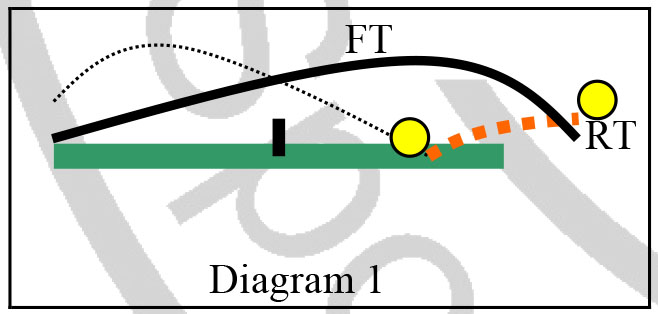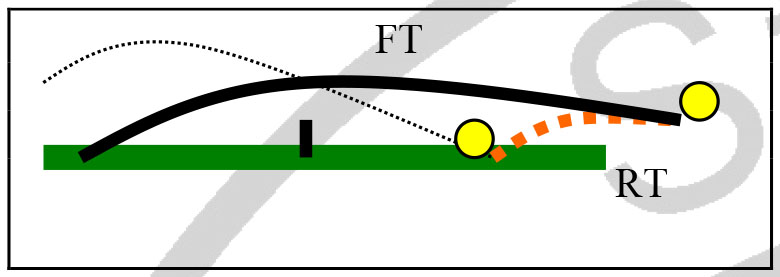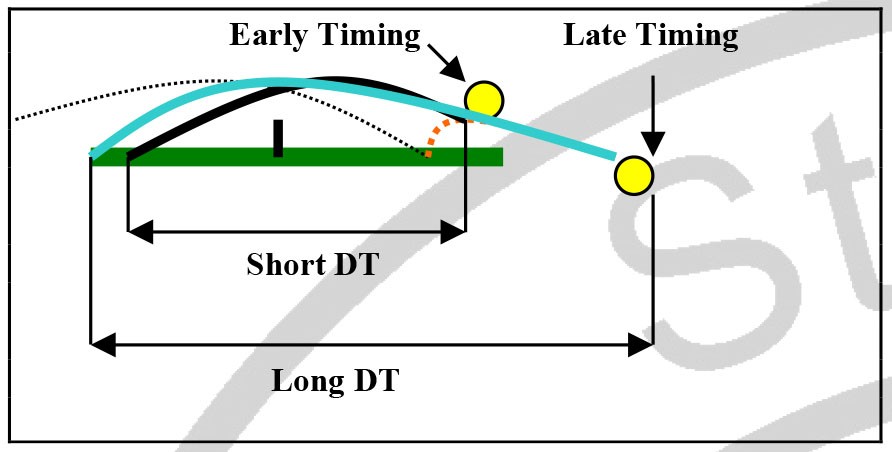

How to Increase Playing Speed
In both practice and match play, the player who executes shots more quickly gains the initiative by reducing the opponent's preparation and reaction time. This can catch the opponent off guard and make them feel helpless, allowing the player to have more time to prepare their own shots. During a rally, the player with faster speed gains the initiative and creates more opportunities for attacking.
1: Analysis of Speed in Relation to Ball Striking
The law of physics states that Speed (velocity) = Distance / Time. This provides two methods to measure the rate (speed) of velocity:
A: Given the same period of time, if the DT (Distance Travelled) is longer, then the speed is faster; if the DT is shorter, then the speed is slower.
B: Given the same DT, if the time required is shorter, then the speed is faster; if the time required is longer, then the speed is slower.
While it may be relatively easy to apply these principles to measure the speed of a 100-meter runner, it is impractical to measure the speed of two table tennis players when they are playing against each other. Before observing and analysing the players' speed when playing shots (slow or quick), we must take into account the following:
The total time it takes to make a return (RT) is measured from the point where the oncoming ball lands to the moment the bat makes contact with the ball (see Diagram 1)

The RT varies based on several factors, including the opponent's speed when striking the ball (whether slow or quick), the opponent's force in striking the ball (whether great or small), the spin generated (whether weak or strong), and the placement of the ball (whether near or far from the receiver's body).
In general, when the oncoming ball is played with great speed, spin, and/or placed far from the receiver's body, the time it takes to make a return tends to be longer. Conversely, it is shorter under other circumstances. However, this condition is not absolute.
Reducing the RT when making a return against an oncoming ball played with great speed, spin, strong force, and placed far from the body gives a player a good chance to suppress their opponent's speed and gain initiative. Therefore, taking the ball as early as possible is crucial in reducing RT and cutting the opponent's preparation time to make their return.
Once the return has been made, the ball enters its flight time (FT), measured from the moment the ball leaves the bat until it lands on the opponent’s side (see diagram). The FT varies according to the player’s use of force (whether great or small) and the length of the DT (distance travelled).

In general, when a player strikes the ball with great bat arm acceleration (while transferring the weight and balance of the bat to the tip), the FT tends to be shorter. Conversely, it is longer otherwise. However, this condition is not absolute.
When making a return, if a player takes the ball as early as possible and utilizes the oncoming ball’s forward drive momentum, the ball experiences greater force and rebounds with greater speed and acceleration. Simultaneously, the DT shortens, resulting in a reduction of the FT. This method is crucial in generating greater speed for returns.
Theoretically, the ideal method to generate a greater total return would be to first reduce the return time (RT) by taking the ball as early as possible, followed by minimizing the flight time (FT) wherever and however possible. However, practical experiences prove that players have varying styles of play, and their positioning in relation to the table or distance from the table differs when making returns.
As a result, different rhythmic patterns (whether slow or fast) may emerge in playing the ball. For instance, some players achieve short returns by taking the ball on the rise or at the top of its bounce but do not necessarily generate short FTs at the same time because they make returns by utilizing the force of the rebound only.
On the contrary, some players have longer RTs as they take the ball late but generate short FTs because they make returns by utilizing more of their bodily forces.
Currently, the use of different rhythmic patterns to disrupt the opponent’s playing rhythm has become a major strategic weapon in competitive match play.
In summary, to accurately measure the speed with which players play shots, we must consider the combined time given by RT + FT as the only true reflection of speed.
General Ways of Creating Speed:
Based on the findings so far, we can create speed in the following ways:

I hope this explanation of how to create playing speed and introducing different ball trajectories would be helpful for you to advanced your understanding of the game.
Until the next time
Play Right
Javad